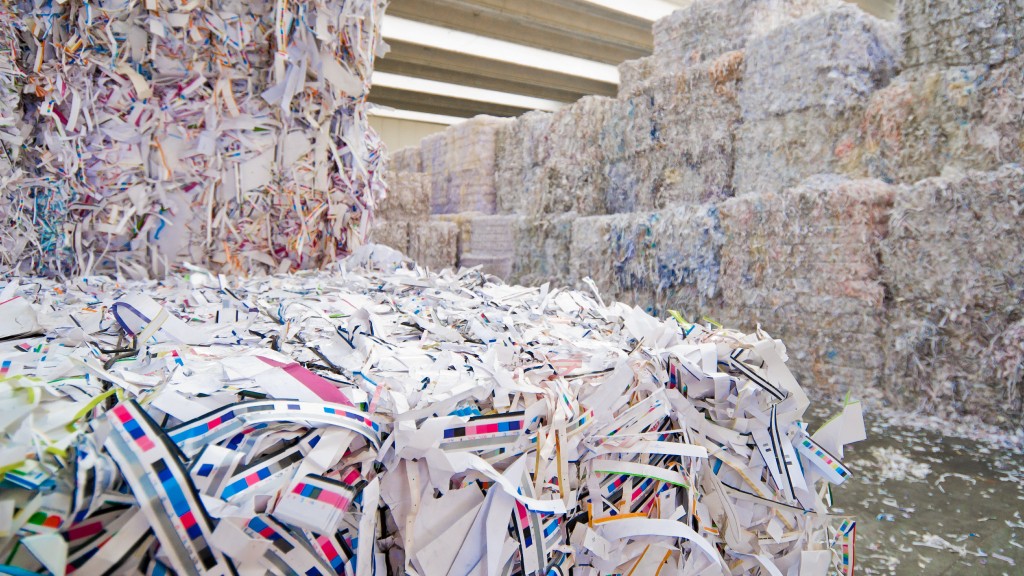A look at recovered paper markets in Asia
While the U.S. and Europe are experiencing a boxboard recession, Asia's story is entirely different.

India may be the largest importer of recovered paper from the U.S., but countries like Thailand and Indonesia are catching up quickly.
On the other hand, U.S. exports to China – which used to be the largest importer of U.S. recovered paper until a few years ago – have dwindled due to high tariffs and a change in the grade purity required by China. However, countries like Thailand and Indonesia have stepped up their exports after further processing of the grades imported from the U.S. to meet China's requirements.
Between January and September 2023, Thailand, Indonesia, and China imported nearly 8.6 million mt of recovered paper. Tonnages are 33 percent higher against 6.44 percent annually, leaving the Americas behind by a significant volume.
A breakdown of the data from each country's Customs reveals a rising demand for recycled fibre across the continent. Let's look at some of the top contenders during the nine months under review.
Thailand
Recovered paper shipments into Thailand increased by 60 percent between January and September to 2.71 million mt compared with 1.7 million mt during the year-ago timeframe. The country also bought 48 percent more in September at 283,932 mt against 191,295 mt in the same month of 2022. Sequential volumes dipped by 6 percent from 301,805 mt. However, experts believe that the monthly decline may not indicate weak demand, but a fallout of supply shortages from suppliers' mills.
The U.S. was the top seller of recovered paper to Thailand in the first nine months of the year. Annual shipments climbed by 81 percent to 1.89 million mt compared with 1.04 million mt from January to September, and 31 percent to 198,240 mt against 151,255 mt in September. Monthly volumes in September fell by 5 percent from 207,900 in August.
Indonesia
The country imported 2.36 million mt of recovered paper between January and August and 309,893 mt in August. These figures translate to a 9 percent annual incline against 2.16 million mt during the first eight months under review and a 29 percent climb from 239,483 mt in August 2022.
Shipments from the U.S. were 21 percent lower between January and August at 257,530 mt compared with 326,449 mt in the prior-year period. On the other hand, tonnages picked up considerably in August. The U.S. emerged as Indonesia's top seller during the month under review with 50,973 mt. This shows a 22 percent annual rise against 41,785 mt and 38 percent higher than 36,903 mt sequentially.
In the U.S., Los Angeles has been the busiest port for recovered paper exports to Asia since most of the shipments to the Far East take place from the U.S. West Coast. Recovered paper trade peaked in early September when Davis Index prices of Baled #11 Old Corrugated Containers (OCC) were up $12/nt to $151/nt for Los Angeles. Scale trade collectors also bring in more export-grade recycled fibre which makes the port city a preferred location for Asian buyers from Thailand and Indonesia.
China
Total recovered paper imports by China rose by 48 percent in the first nine months of 2023 to 3.6 million mt from 2.44 million mt annually. In September, the country's volumes stood at 430,649 mt, soaring 59 percent against 271,166 mt annually and were 13 percent higher than 382,656 mt imported in August
China was the U.S.' most significant buyer of recovered paper, especially corrugated grades, in 2022, according to market participants. In 2023, volumes dwindled by 29 percent to 181,220 mt between January and September compared with 256,083 mt in the same nine months of 2022. The decline has became more apparent in September as volumes slid by 91 percent to 3,139 mt from 36,029 mt in the year-ago month and dipped by 17 percent from 3,767 mt in August
Interestingly, China has raised its annual material shipments considerably from Thailand. Tonnages have soared by 116 percent between January and September to 1.9 million mt compared with 878,028 mt in the prior-year timeframe. It is also significant that Thailand's total imports during the period were 2.7 million mt, which means the country ships out almost 42 percent of its imported pulp to China, which has continued to raise its buying from the Far East.
In fact, Thailand, Malaysia, and Hong Kong were the top exporters to China in the first nine months. Malaysia exported 66 percent more during the period under review at 709,278 mt from 426,126 mt. In September, China imported 102,629 mt from Malaysia. These volumes more than doubled against 35,105 annually and rose by 22 percent compared with 83,979 mt monthly.
When considering recycled fibre imports into the U.S., China has also sold 58 percent fewer tonnages between January and September. Volumes trickled down to 7,243 mt compared with 17,440 mt, and in September China didn't feature among the larger sellers.
There have been several theories about why recovered paper trade between China and the U.S. has trailed off. However, the Asian giant is far from procuring material. Demand hasn't softened and is most likely to strengthen in the near term.
Exports
Asian recycled fibre mills have also been buying extensively from Europe as well. In the first nine months, Thailand imported 45,868 mt from the European Union, 643 percent higher than 6,176 mt annually. Shipments to Malaysia from the EU climbed 254 percent at 54,051 mt compared with 15,282 mt, and tonnages to Indonesia were up 101 percent at 104,434 mt against 52,102 mt during the same timeframe.
Market participants also cited that the recovered paper industry has evolved over the decades. Even though there are concerns about a boxboard recession, recycled fibre demand, albeit soft, isn't likely to weaken any time soon. Mills around the world have been upgrading and expanding, which means the industry will likely recover after mid-2024.
Huban Kasimi is the recycled materials editor at Davis Index and can be reached at [email protected].



